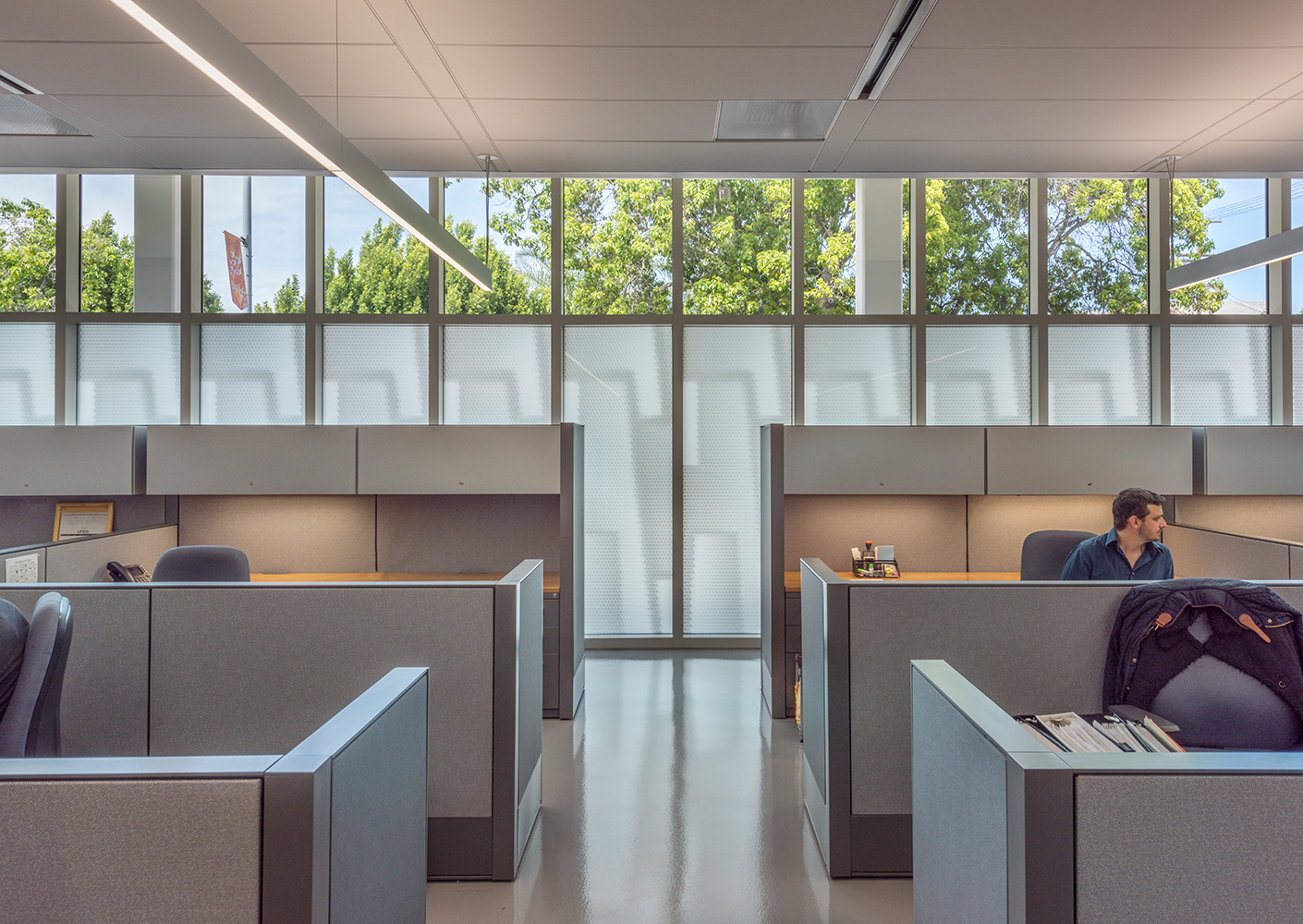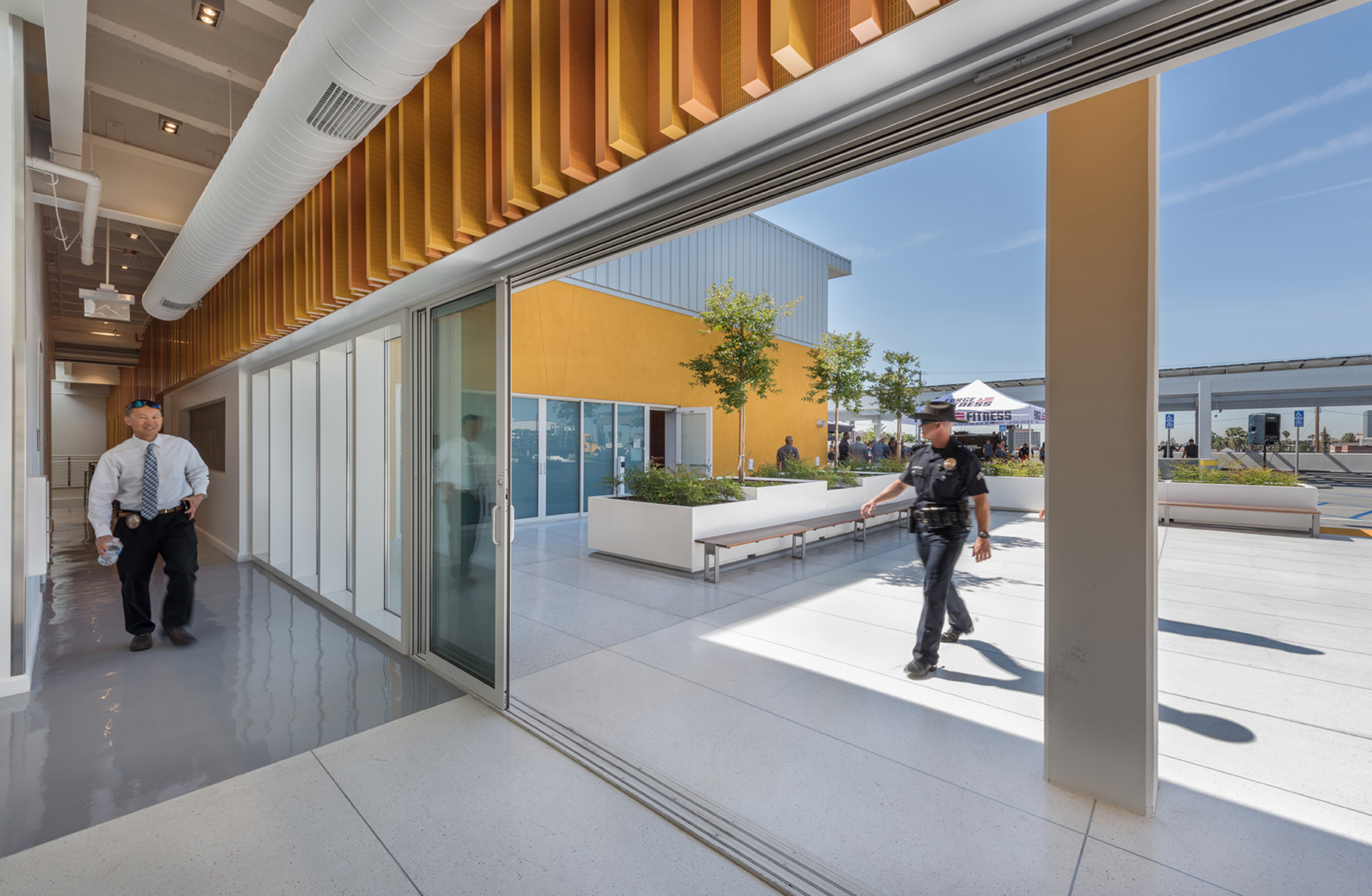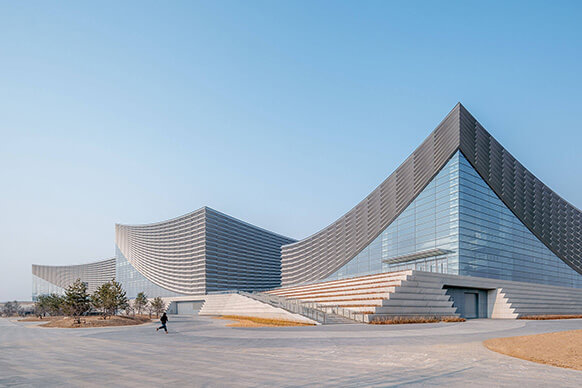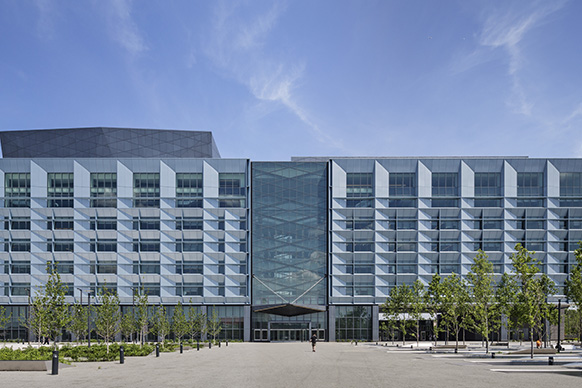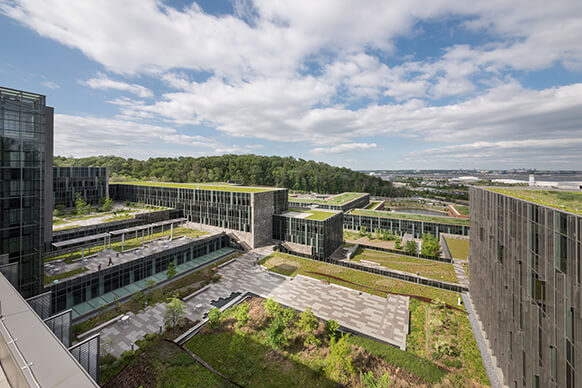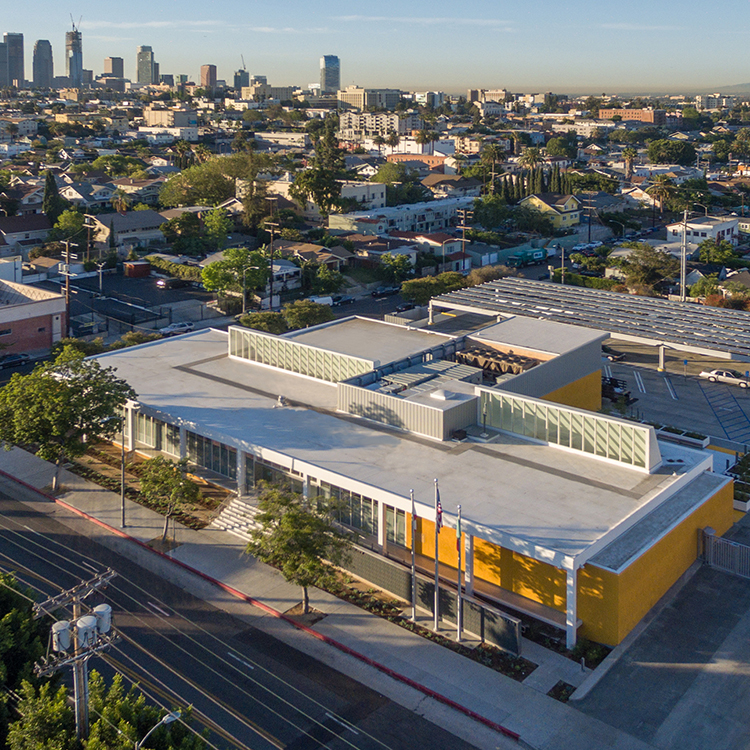
LAPD Metropolitan Division Facility Renovation
Policing in Los Angeles was a vastly different affair in 1966 than in 2016. In 1966, the original LAPD Rampart Station was designed as a heavily-fortified community police station. It was a walled-off 2-story concrete bunker in a residential neighborhood – a necessary design response in a time of riots, Proposition 14, and social upheaval in a rapidly-growing city.
Fifty years later, our design team worked with the LAPD to reconfigure the old station to house the elite LAPD Metro division that includes SWAT, the K-9 unit, an administrative platoon and five field platoons.
Together, we developed tactical interventions that respect the original architecture while communicating a welcome fresh image to the community. As the “physical embodiment of neighborhood safety,” a police station sets the tone of how the force interface and relate with their communities.
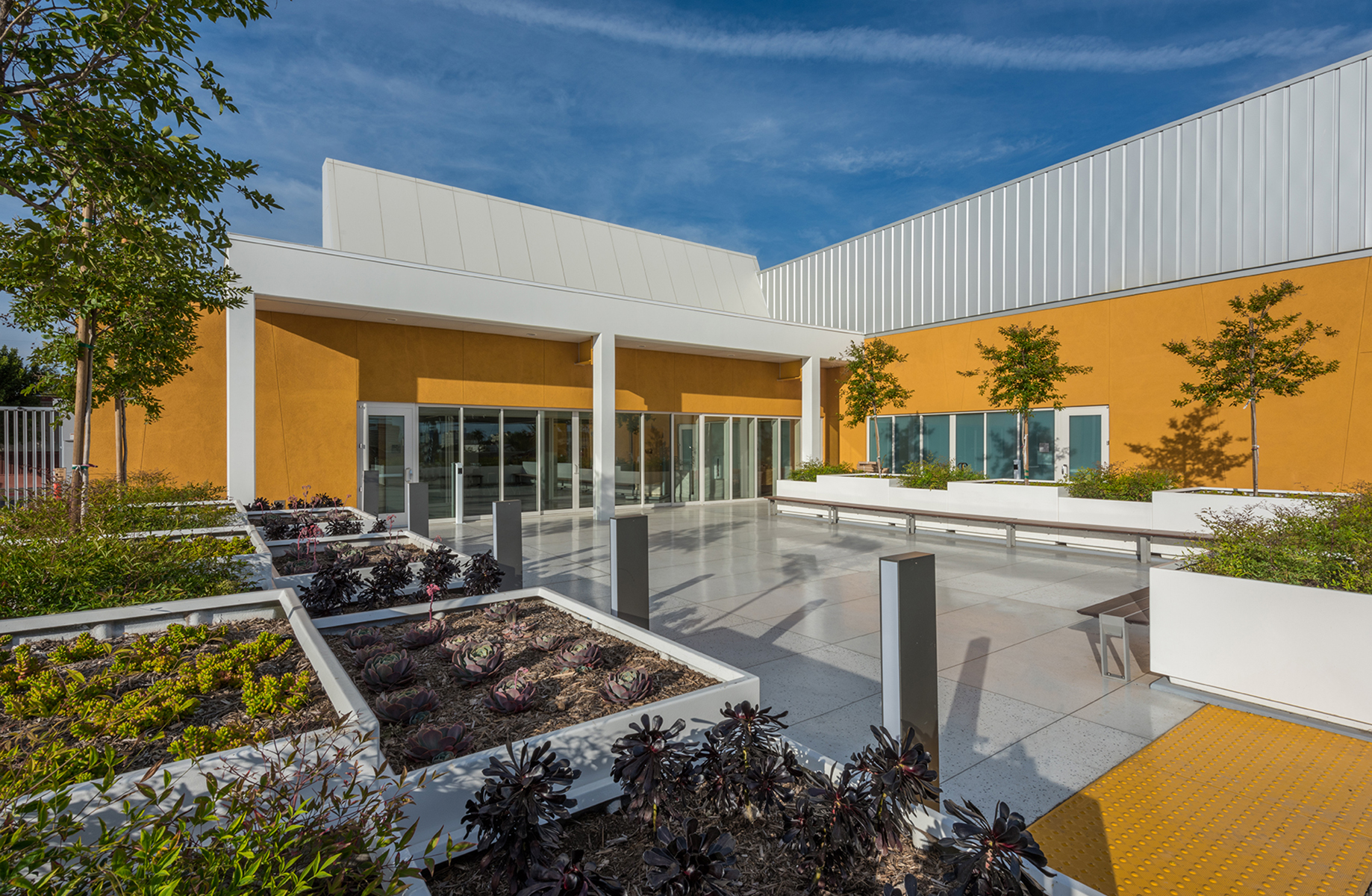
The tactical transformation of the existing, bunker-like facility combines design elements such as indoor/outdoor spaces, diffused natural light, pocket park landscaping, sheltered parking, and strategic HVAC zoning in order to maximize aesthetic and functional impact.
Nick Seierup, Design Principal
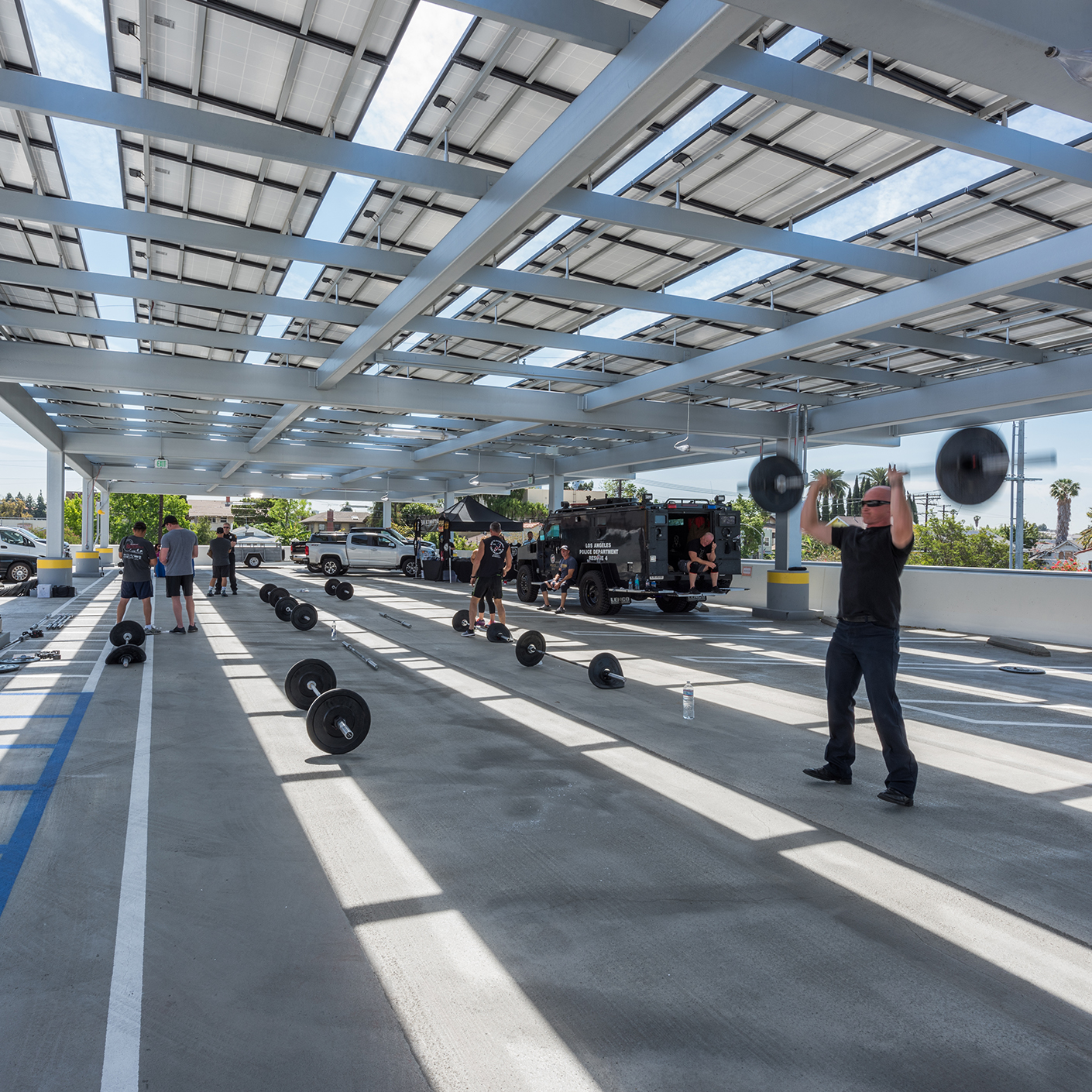
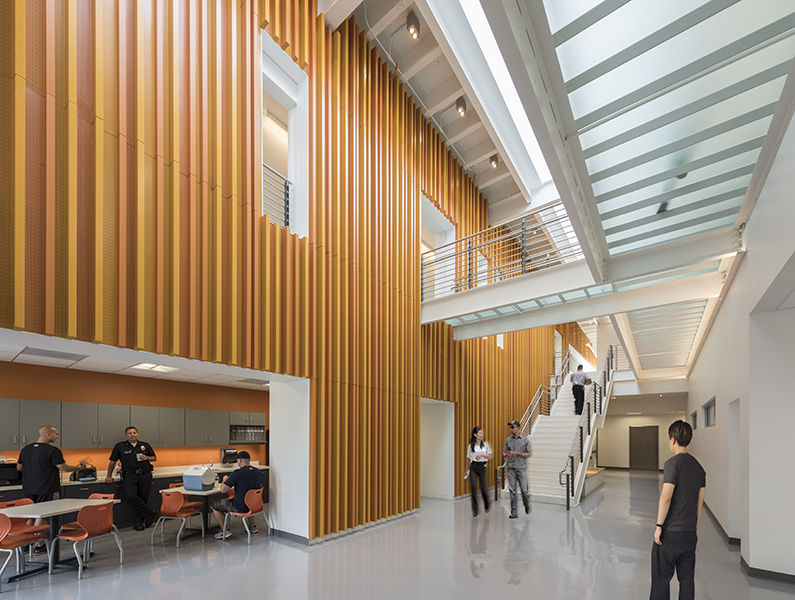
Inside, strategic carvings admit daylight into high priority, frequently-occupied spaces such as the “slot”–the central interconnecting circulation hub.
Officers use different parts of the office environment if, for example, they want to be closer to daylight or if they prefer to use the lounge. Workplace flexibility allows platoons to grow or shrink as policing needs change.
